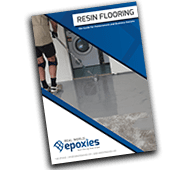Home › Advice › Know How › Knowhow
UV Exposure and Indoor Epoxies
We all know epoxies will yellow outside, but it may come as a big surprise to hear indoor epoxies aren’t entirely safe either!
As already discussed in a previous post (Do
UV-stable and low-yellowing epoxies exist?)
, all epoxies will break down in direct sunlight and much of this has to do with a chemical structure that isn’t very stable when it
comes to UV light. Because of this, and their excellent all-round performance in other areas, epoxies are naturally better suited as
indoor coatings and are widely used in factories, warehouses, commercial kitchens, offices and homes. But, don’t be fooled! Just because
these films are applied indoors, doesn’t mean you can’t be burned by UV exposure (pardon the pun).
UV exposure can still happen with indoor epoxies!
Here are a few points on what I’ve learnt about indoor epoxies and UV exposure:
-
Although UV exposure can lead to other film issues, the main danger indoors is yellowing. You’re not likely to see obvious signs of chalking
or cracking because indoor coatings generally don’t have to contend with rain or extreme temperature fluctuations.
-
The way UV exposure occurs indoors is through windows (and large entrances such as roller doors, although that’s a more obvious danger).
Luckily, there are countless combinations of glass and nowadays it’s not uncommon for it to be laminated and contain some form of UV
blockers, which significantly reduce transmission levels. Double-glazed and tinted windows do the same thing. The last point to consider
with UV exposure through glass is the aspect. In the southern hemisphere, northerly facing windows allow maximum UV light exposure.
-
A forgotten source of UV light indoors can be fluorescent tubes. I’m no lighting expert, but as I understand it a new fluorescent tube has a
lining on the inside that gets “excited” by UV radiation, converting it into the white light we see. Over time this lining degrades, which
allows the UV light to escape from the tube and come into contact with indoor coatings. Likewise, IR heat lamps in bathrooms can also cause
problems. IR is a bandwidth that gives off heat, not just visible light, however it’s possible enough UV is given off to discolour
vulnerable surfaces.

Final thoughts on UV exposure
With this post and the previous one, we’ve covered a fair bit on UV exposure and yellowing. While there’s much more to say on this important
topic, for now I’ll close with a few scattered notes to also think about:
-
To repeat a well-worn line, it’s important to understand and accept all coatings will yellow to a degree. Some will more than others and you
must do your homework when it comes to product selection.
-
Any colour with yellow in it will tend to show less yellowing. In other words, yellowing in beige, green and even some greys (with a
yellow undertone) won’t be anywhere near as noticeable as other colours and this can be used to your advantage where UV exposure is a
concern. White is clearly the worst as a telltale, although that doesn’t stop it from being a very popular choice!
-
Yellowing tends to stand out more when side-by-side with a clean section (what we call a "contrast line"). For example, a
roller door on a garage, or even an old mat or pot plant at the entrance of a plain glass door will reveal a very neat yellow border when
removed.
- Epoxy Flooring Short Courses
- Bronze Card Course
- Silver Card Course
_800x271a.png)
